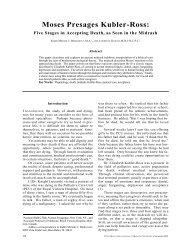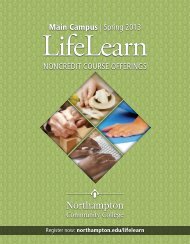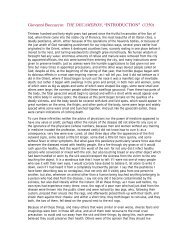SPRING 2008 Community College Magazine - Northampton ...
SPRING 2008 Community College Magazine - Northampton ...
SPRING 2008 Community College Magazine - Northampton ...
Create successful ePaper yourself
Turn your PDF publications into a flip-book with our unique Google optimized e-Paper software.
qwrttxvyukjgdsaxbnm<br />
A few years ago, I was playing golf behind a foursome that was on the next tee as we were finishing up on the green. While<br />
someone in our group putted, shouts of exhilaration and other assorted whoops erupted on the next tee. They could and<br />
did mean only one thing — one of the four had made a hole in one. The foursome exchanged high fives all around, and we<br />
joined in the congratulations for this rare and defining moment in the game of golf. The hole in one will remain among the<br />
lucky player’s most cherished memories of his life. The story of his ace will probably get better and more mythic with each<br />
retelling. That single event captured for me what sport is all about. Stripped of instant replays and slow-motion cameras<br />
and crowd noise, sport is about participation in something entirely physical and intuitive. At its best, it measures one’s<br />
athletic and physical skills against either an opponent or a standard of perfection. Its virtues include preparation, hustle,<br />
making a play, respect for the opponent, and working hard. When two athletes or teams compete, each knowing that they<br />
have done their best to prepare and then play at the highest level of their skill, the outcome, while satisfying to one and<br />
disappointing to the other, is anticlimactic. There is great (though increasingly quaint) satisfaction in the knowledge that<br />
one has done one’s best, win or lose.<br />
A curious aspect of sport is that it resists explanation. It doesn’t<br />
lend itself easily or accurately to analysis and interpretation (this<br />
despite a legion of analysts and interpreters who clog the airwaves<br />
every weekend). The truth is that Peyton Manning throwing a<br />
touchdown pass or Serena Williams breaking a serve are far more<br />
exciting to watch than listening to those athletes explain how they<br />
did what they did. The activity is so reactive and instinctive that<br />
most athletes cannot explain their own performances well. They<br />
simply perform.<br />
That being said, sport is always played in a social context,<br />
either in the company of teammates or opponents and sometimes<br />
in front of spectators who often pay huge sums of money just to<br />
watch. It has its own section in the daily newspapers and its own<br />
television networks. Schools at all levels support and sponsor teams<br />
and athletic contests. The most skillful practitioners at the elite<br />
professional level constitute a new American aristocracy, earning<br />
millions of dollars. Before long, Tiger Woods will become the first<br />
athlete to earn a billion dollars in prize money and endorsements.<br />
To be sure, sport is a visible and celebrated aspect of American life.<br />
As one wag put it, among the unimportant things in life, sport is<br />
the most important.<br />
The question has always been what it is about sport that makes<br />
LEFT CENTER-PHOTO BY PHILIP STEIN/ALL OTHERS-BY RANDY MONCEAUX<br />
it seem so important. The classical response is that sport builds<br />
character. The source of this perspective may be the statement<br />
mistakenly attributed to the Duke of Wellington that “The Battle<br />
of Waterloo was won on the playing fields of Eton,” suggesting<br />
that defeating Napoleon was largely the result of playing soccer<br />
at an upper crust English boarding school. Irony aside, Wellington<br />
may have been on to something (for 19th and 20th century boys<br />
at least) in that the teamwork, cooperation, importance of<br />
practice and striving for excellence learned in play all work<br />
well in professional and corporate life. Participation in sport<br />
during school years was a valuable addition to a resume and job<br />
application, underscoring one’s ability to work well with others and<br />
focus on achieving an important goal. This ideal was well reflected<br />
in Byron White, an All America running back at the University of<br />
Colorado, who later graduated with honors from Yale Law School<br />
and served on the U.S. Supreme Court for over 20 years.<br />
Unfortunately, the lesson of sport-building character was a<br />
moot one for girls of that time, and also resulted in the clubbiness,<br />
insularity and exclusivity that one associates with the down side of<br />
the American ladder to success. Only “team players” needed apply<br />
in Wellington’s model. For many years, that frequently meant<br />
white, male and financially comfortable. It would take another<br />
<strong>SPRING</strong> <strong>2008</strong> ● NCC<br />
19
















